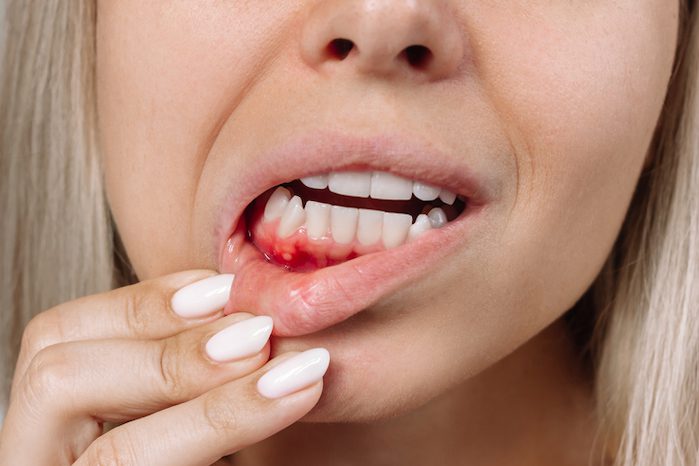Periodontal disease is a common condition that can become dangerous for your entire body. Plaque and bacteria build up in the areas where your gums meet your teeth, irritating the tissue. As this continues, it causes infection that wears away gum tissue and can lead to consequences like tooth loss. We provide periodontal disease treatment as part of our restorative dentistry services.

Gum Disease Stages
Gum disease, also known as periodontal disease, is a common oral health problem that affects the gums and supporting structures of the teeth. It develops in stages, beginning with mild symptoms and potentially progressing to severe damage if left untreated. Understanding these stages can help individuals recognize early warning signs and take action to protect their oral health.
Stage 1: Gingivitis
The first stage of gum disease is gingivitis. Gingivitis occurs when plaque, a sticky film of bacteria, builds up on teeth and irritates the gums. Poor oral hygiene, such as inconsistent brushing and flossing, is the main cause of this condition. Other factors, such as smoking, stress, and hormonal changes, can also contribute to its development.
Common symptoms of gingivitis include red, swollen, or tender gums that may bleed when brushing or flossing. The damage is reversible at this stage because the infection has not yet reached the deeper tissues. Regular dental cleanings and improved at-home oral hygiene can often eliminate gingivitis and restore gum health.
Stage 2: Early Periodontitis
If gingivitis is not treated, it can progress to early periodontitis. At this stage, plaque hardens into tartar, which cannot be removed with regular brushing and flossing. The bacteria in tartar release toxins that cause the gums to pull away from the teeth, creating small pockets. These pockets trap more bacteria and debris, leading to further infection.
Symptoms of early periodontitis include persistent bad breath, receding gums, and discomfort when chewing. Dental cleanings, scaling, and root planing—a deep cleaning procedure—are often necessary to remove tartar and bacteria from below the gumline. Early intervention can prevent further damage and keep the condition from advancing.
Stage 3: Moderate Periodontitis
In moderate periodontitis, the infection spreads deeper into the gums and starts to damage the bone and connective tissues that support the teeth. The pockets around the teeth become deeper, making it easier for bacteria to accumulate and worsen the condition.
Symptoms may include increased tooth sensitivity, noticeable gum recession, and teeth that appear longer due to gum loss. Some people may experience pus between the teeth and gums or feel that their teeth are becoming loose.
Treatment for moderate periodontitis often involves more intensive cleaning procedures, such as scaling and root planing, along with antibiotics to control the infection. Surgery may sometimes be required to repair damage and reduce pocket depth.
Stage 4: Advanced Periodontitis
Advanced periodontitis is the most severe stage of gum disease. At this point, the infection destroys the bone and tissue that hold the teeth in place. Teeth may become so loose that they fall out or need to be extracted. The gums often recede significantly, and the risk of tooth loss is high.
Symptoms of advanced periodontitis include severe chewing pain, significant gum recession, and loose or shifting teeth. Chronic inflammation from advanced gum disease can also affect overall health, increasing the risk of heart disease and diabetes.
Treatment for advanced periodontitis often involves surgical procedures, such as gum grafts or bone regeneration, to restore lost tissue. In extreme cases, tooth extraction and replacement options, such as implants or dentures, may be necessary.
Gum Disease Treatment in San Antonio, TX
Gum disease, or periodontal disease, is a common but serious condition that affects the gums and supporting structures of the teeth. Gum disease can progress without treatment, leading to tooth loss and other health problems. Fortunately, a range of treatments is available, tailored to the severity of the condition. These treatments aim to stop the disease, repair damage, and restore oral health.
Treatment for Gingivitis
Gingivitis, the earliest stage of gum disease, is reversible with proper care. Treatment focuses on removing plaque and tartar buildup that irritates the gums. The first step is a professional dental cleaning, during which the dentist or hygienist thoroughly removes plaque and hardened tartar from above and below the gum line.
At home, patients can continue treatment by improving their oral hygiene routine. Brushing twice daily with fluoride toothpaste, flossing daily, and using an antibacterial mouthwash help reduce bacteria and prevent plaque from returning. Consistent care at this stage can completely reverse gingivitis and restore healthy gums.
Treating Early Periodontitis
If gum disease progresses to early periodontitis, more intensive care is necessary. At this stage, the gums pull away from the teeth, forming pockets where bacteria collect. Treatment focuses on eliminating bacteria from these pockets to prevent further damage.
Scaling and root planing is a common procedure for early periodontitis. This deep-cleaning method involves two steps:
- Scaling removes tartar and plaque from both above and below the gumline.
- Root planing smooths the tooth roots, making it harder for bacteria to adhere and helping the gums reattach to the teeth.
Dentists may sometimes recommend antibiotics to control infection and reduce bacteria in the pockets. Depending on the situation, these can be applied directly to the gums or taken orally.
Treatment for Moderate Periodontitis
Moderate periodontitis requires more advanced interventions to halt the disease and repair damage. The pockets around the teeth are deeper, and the infection may have begun to damage the bone and connective tissues.
Scaling and root planing are still the primary treatments, but additional measures may be needed. Dentists might use laser therapy to more precisely remove infected tissue and bacteria. This minimally invasive approach promotes faster healing and reduces discomfort.
Surgical procedures may be necessary for patients with persistent pockets or bone loss. Flap surgery, for example, involves lifting the gums to access and clean deep pockets. The gums are then sutured back to reduce pocket depth and prevent infection.
Advanced Periodontitis Treatment
In advanced periodontitis, the damage to gums, bone, and surrounding tissues is significant. Treatment at this stage often involves surgical procedures to repair or replace lost structures and stabilize the teeth.
- Bone grafts are used to regenerate bone destroyed by the disease. Small pieces of natural or synthetic bone material are placed in the affected areas to encourage regrowth.
- Soft tissue grafts restore receding gums by transplanting healthy tissue from another part of the mouth. This helps protect exposed tooth roots and improves the appearance of the gums.
- Pocket reduction surgery involves folding back the gums to remove bacteria and infected tissue and repositioning them to fit snugly around the teeth.
- Tooth extractions may be necessary if teeth are too damaged to be saved. Dentists can recommend replacement options like dental implants, bridges, or dentures to restore function and aesthetics.
Maintaining Results After Treatment
After gum disease treatment, ongoing care is critical to prevent recurrence. Dentists often recommend more frequent cleanings every three to four months to monitor oral health and remove any plaque or tartar buildup. Patients should also continue practicing excellent oral hygiene at home, including brushing, flossing, and using mouthwash daily.
Dentists may suggest periodontal maintenance for patients with a history of gum disease, a specialized program that includes deep cleanings and regular monitoring. This proactive approach ensures the gums and teeth stay healthy long-term.
Schedule an Appointment
Early intervention is crucial for successful gum disease treatment. Call our office or schedule an appointment online.
